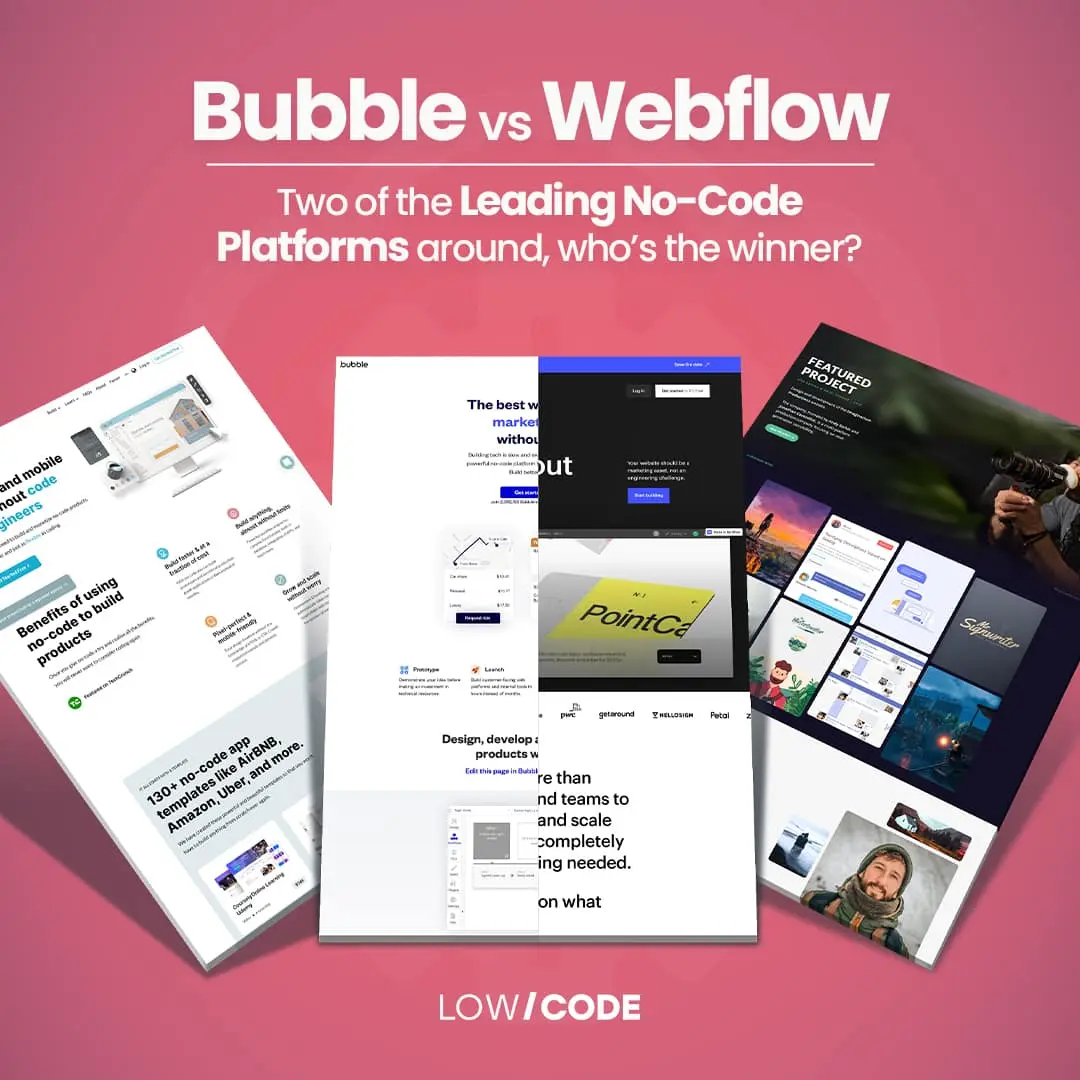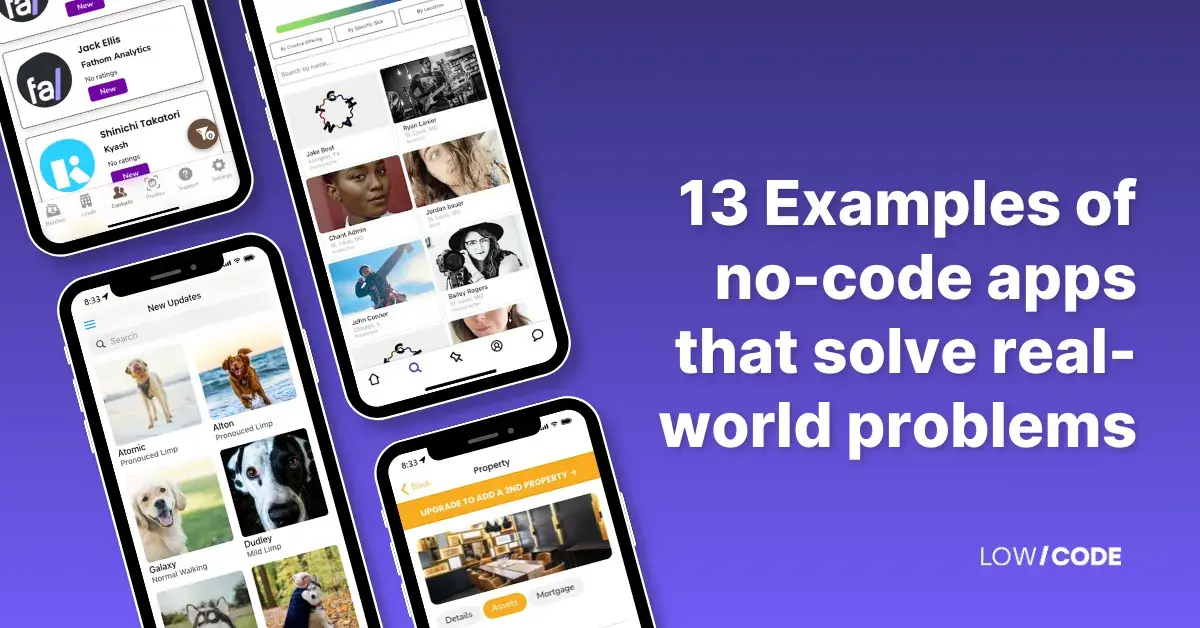
13 Examples of no-code apps that solve real-world problems
Apps used to be very hard to make, and yet there are so many examples of "normal" folks solving real-world problems today with the rise of no-code/low-code app development.
No-code is fairly self-explanatory: you get the tools to develop an app without touching a single line of code while maintaining the power and flexibility of traditional apps. Sounds great, right?
No-code-empowering industries
Even though they are proprietary, no-code apps are just as good as code-based apps. The best part is that they solve real-world problems for different industries in previously unimaginable ways. Consider a no-code platform, which allows small businesses to create their own customized e-commerce websites without the need for coding knowledge. Entrepreneurs can create online stores quickly, manage inventories, process orders, and provide seamless customer experiences. These incredible no-code industry solutions are transforming businesses by providing simple tools for building powerful applications.
Examples of no-code industry solutions:
- Patient scheduling and appointment management systems for healthcare providers
- Nonprofit fundraising and donor management systems
- Learning management systems (LMS) for educational institutions
- Inventory management systems for retail and wholesale businesses
- Property management software for real estate companies
We have 13 examples to illustrate how no-code can make a real difference in the lives of people, for all kinds of purposes, and see how this trend is here to stay.
No-code example 1: Goodgigs - Job board app
Goodgigs is a job board for "social impact" jobs, meaning that it only displays opportunities for positions that either directly or indirectly impact people or the environment positively.
The concept behind Goodgigs is fascinating, and the web app is built entirely using Bubble, a no-code web app builder that allows you to build fully-functional applications from scratch.
Goodgigs has dozens of companies already enrolled in the program, and they have a neat "Companies" tab where you can see all of the participants in the job board:
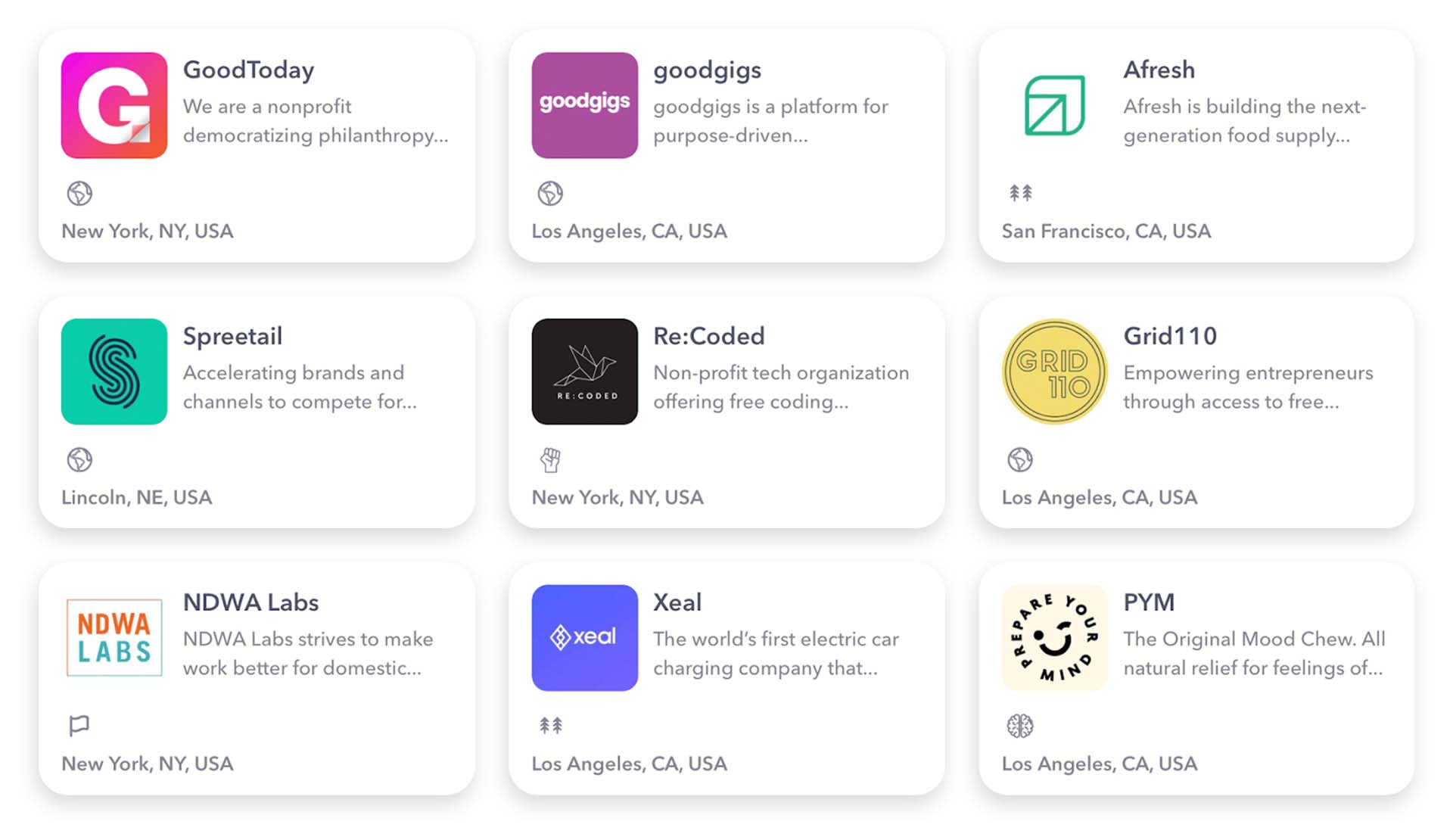
Organizations looking to give back or offer services for social good can join directly via the big purple button in the top-right corner and benefit from a unique hiring experience.
The signup page is just as pretty as the homepage, with a clean design aesthetic, and a user-friendly interface that makes it easy to input all information necessary:

One of the more powerful things about using a platform like Bubble is that forms can be directly integrated into the web application, making it easy to collect information from users:
With the database directly connected to the platform, this information is then stored appropriately and kept secure for later reference or updating.
Overall, Goodgigs is a great example of a no-code app that solves a real-world problem of helping purpose-driven organizations hire the right people at the right time.
No-code example 2: UserLoop - An app to collect customer feedback
James Devonport, the founder of UserLoop, created an app that collects customer feedback with the no-code platform Bubble. It allows users to customize surveys, provides real-time previews, and offers analytics for understanding and optimizing their marketing strategies.
The app allows for a high degree of customization, enabling users to personalize everything from the survey copy to the reaction emojis. With integrations such as SendGrid, users can efficiently send out large volumes of customer satisfaction surveys via email.
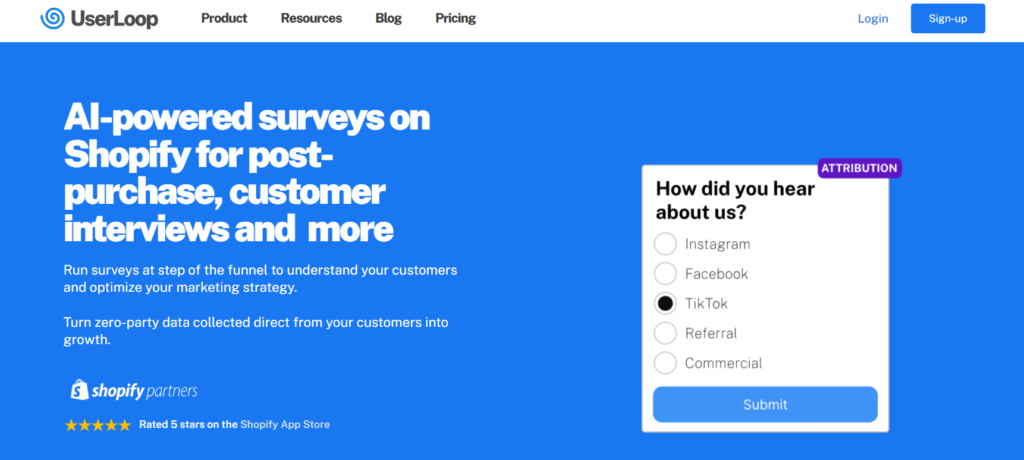
UserLoop features a responsive single-page design built on the OpenBuild Bubble framework, ensuring a fast and intuitive user interface.
The Survey Settings screen offers real-time updates, providing users with a live preview as they customize their surveys. Additionally, the app includes a fully documented API for sending and retrieving responses, enhancing its flexibility and usability.

The app also supports analytics, which allow users to understand how customers discovered their store and assess the revenue generated by each marketing channel. Moreover, UserLoop can be used for Conversion Rate Optimization (CRO), as it can gather information on buyer demographics and purchase patterns.
UserLoop goes beyond traditional data collection for marketing purposes: users willingly share their preferences, and that sets it apart from third-party data or intrusive methods. This not only builds trust but also delivers authentic insights into user preferences and behaviors.
No-code example 3: Outsite - Coliving app
Outsite is a gorgeous web application made entirely with the advanced website builder Webflow. It's an absolute marvel of design, and it has functionality to match…
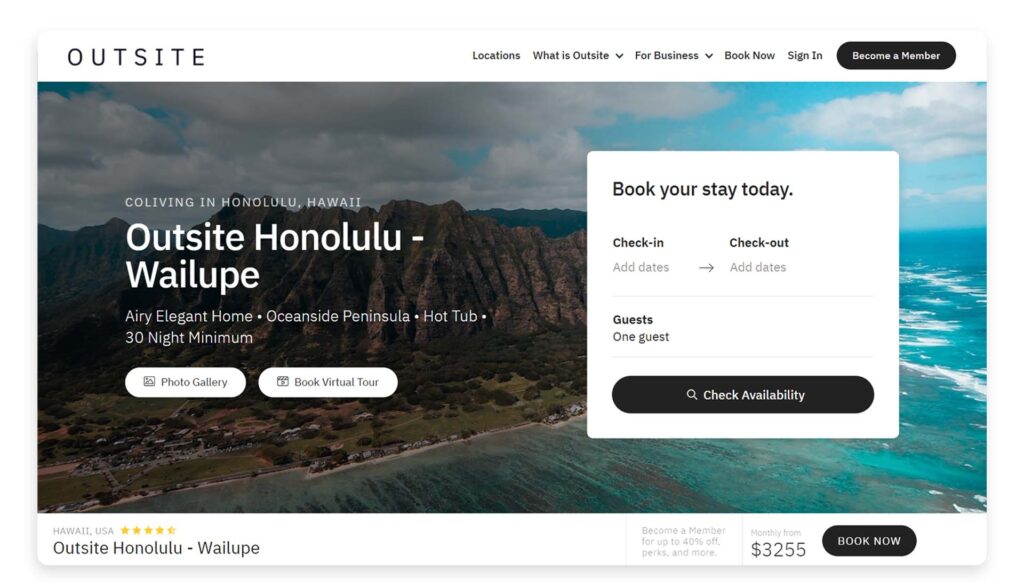
As a coliving web app helping remote workers find the right communities to spend time in while finding ways to unwind from the daily grind, Outsite has found its niche.
On Outsite, visitors can browse through a variety of locations, both in the USA and across borders, helping them find the next place to spend some quality time:

For each location, the app showcases beautiful imagery in a column layout that is very easy to navigate, and with a rounded design that's consistent throughout:

Being so involved in this community of remote workers, Outsite has a clear vision as to how they can bring value to their audience by combining life, work, and play:
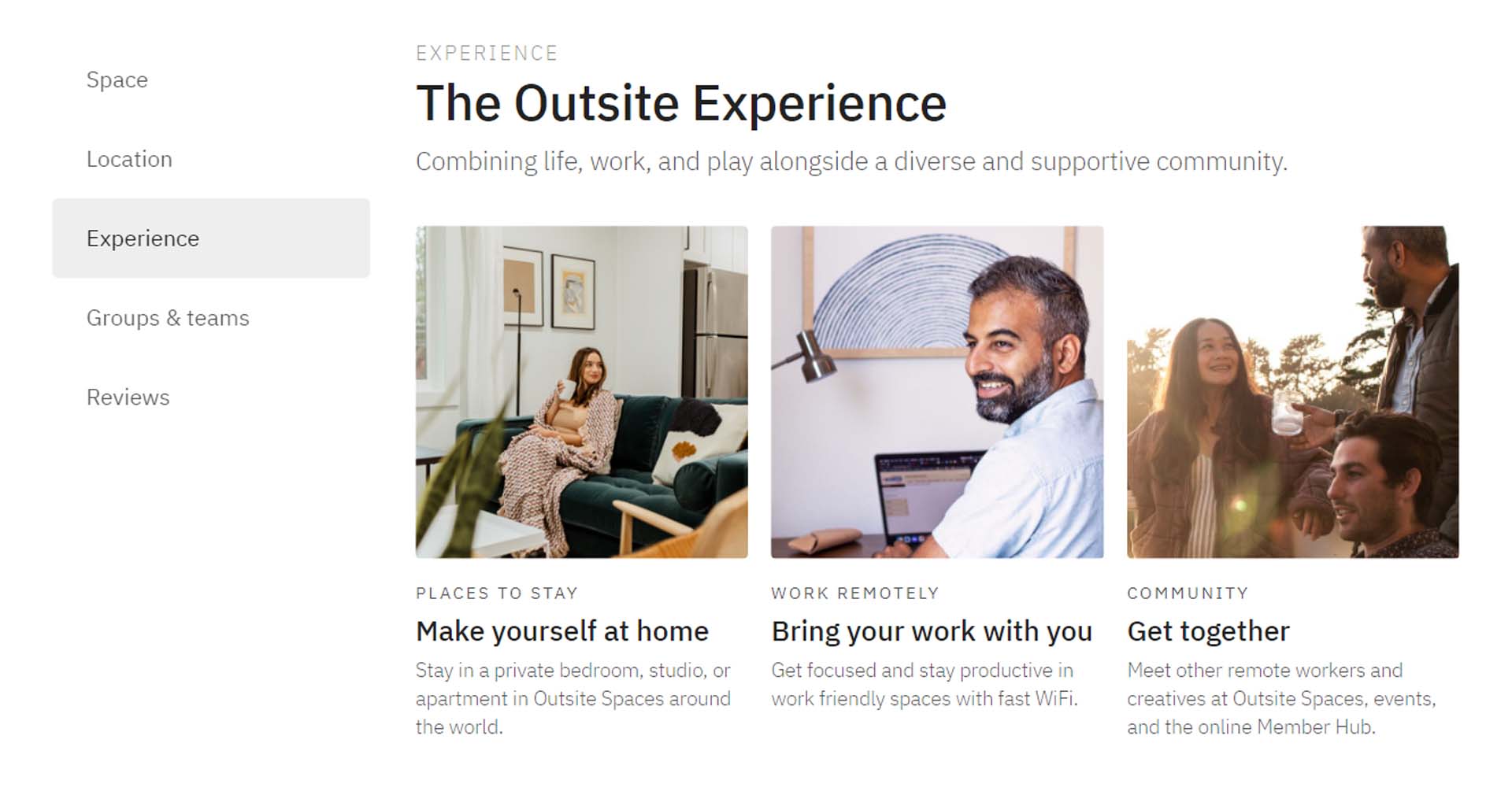
But even better than marketing materials, a website like Outsite can display user-generated content without the owners having to constantly update the website manually.
For each location, previous customers are able to leave their own review and, with a simple check, the website owners can mark them as verified for additional trust:
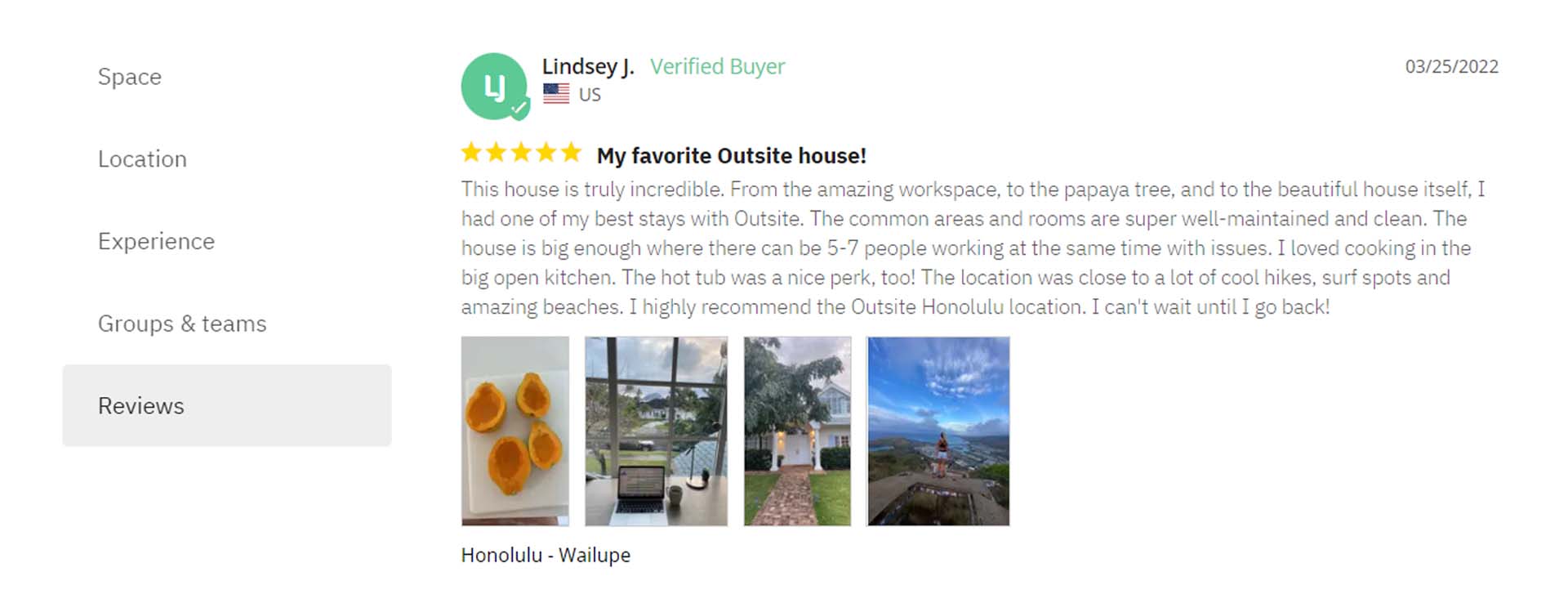
The styling of each review is done automatically as the customer shares their experience, similar to how Amazon or any other dynamic website works.
No-code example 4: My nursery - Teaching app
Examples of no-code apps span multiple fields, including children's education. With My Nursery, the people behind the app set out to create an intuitive way to manage nursery work.
As an app made for teachers, you can create plans for each class with different activities and time spent on each, allowing you to visualize and implement them easily.
Once you create enough plans (there are different varieties!), it's really easy to browse them through the Home dashboard, as well as directly search for them via the "Search" tab.
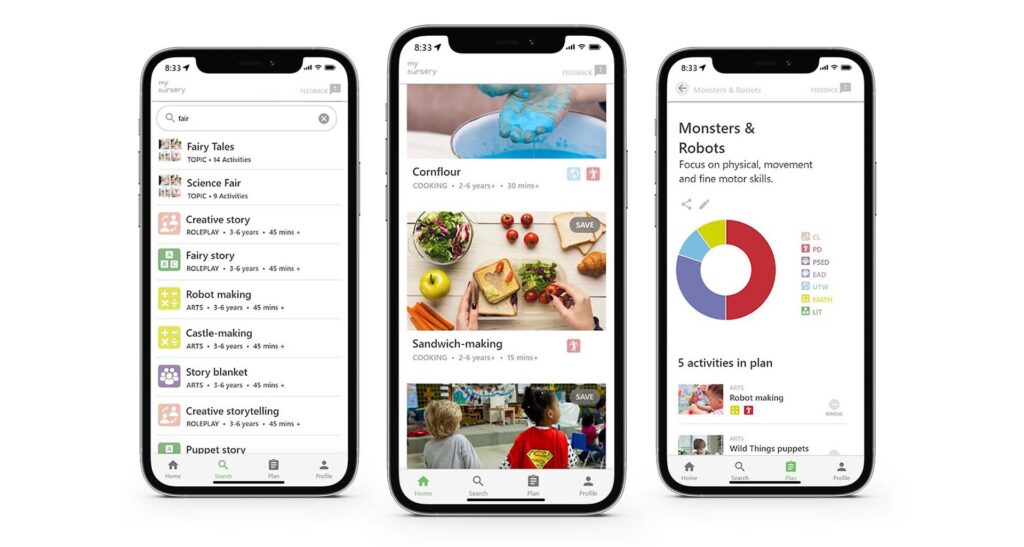
You can build an app for your business like this with Adalo and make it available on both the Apple App Store as well as the Google Play Store (they work great since they're fully-native applications!).
With its cutesy design and its functionality made specifically for teachers, the app is an amazing example of what no-code development can help non-techie people achieve.
No-code example 5: Simini - Post-surgical pet care
Pet surgeries can be stressful, and Simini's vets knew that struggling with ineffective communication could lead to delayed updates and compromised post-surgical care.
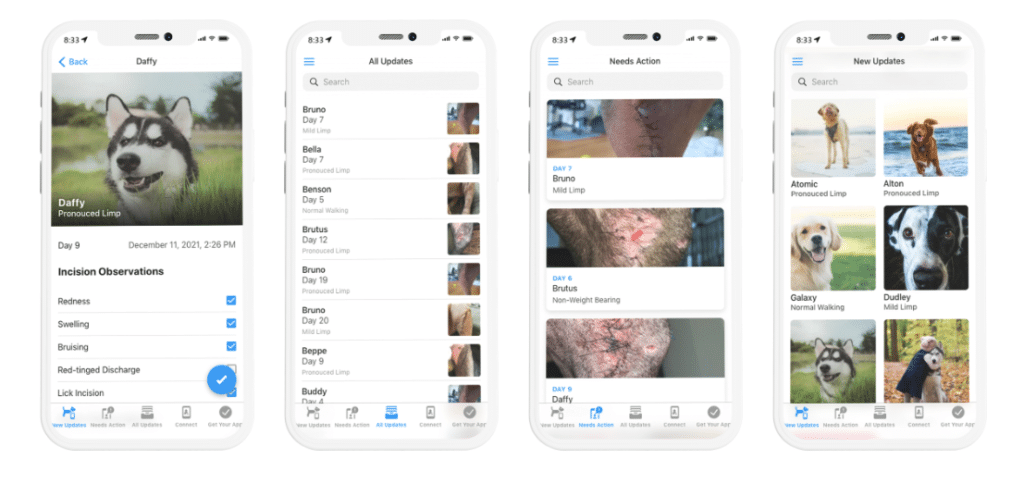
The goal was to streamline communication and collaboration, providing quick updates and enabling efficient post-surgical care. They turned to us at LowCode Agency and, using Glide, we developed an app that unites pet surgeons, veterinarians, and owners on a single platform.
Pet owners easily share recovery updates, and surgeons and vets get real-time notifications. Now, vets stay informed in real-time, from improvements to any concerns. This professional solution is making pet care smarter and more connected. Simini has helped with a 40% reduction in average response time for addressing post-surgical concerns. That's a real impact!
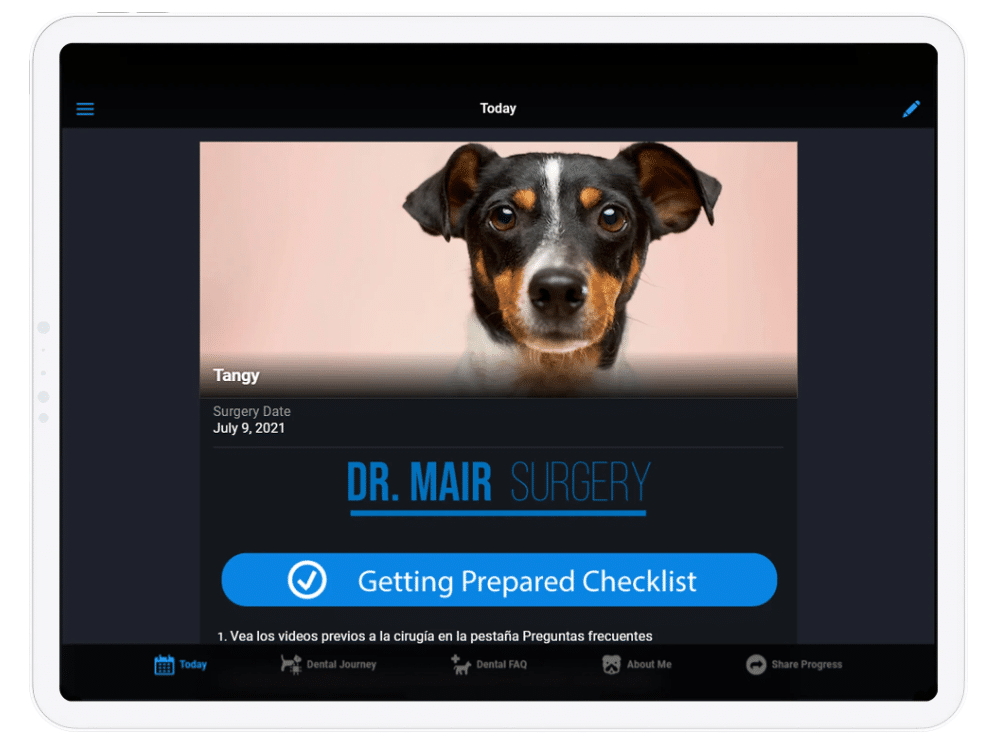
Listen to our latest episodes of the Low-Code/No-Code Podcast and discover how to build powerful applications without writing a single line of code!
No-code example 6: COIN App - An app to manage finances
COIN is an app designed to help you with personal finances. Its free version is very complete, but there's also a premium one available with unlimited access to all features.
COIN app was built using Flutterflow, and it's simple but effective!
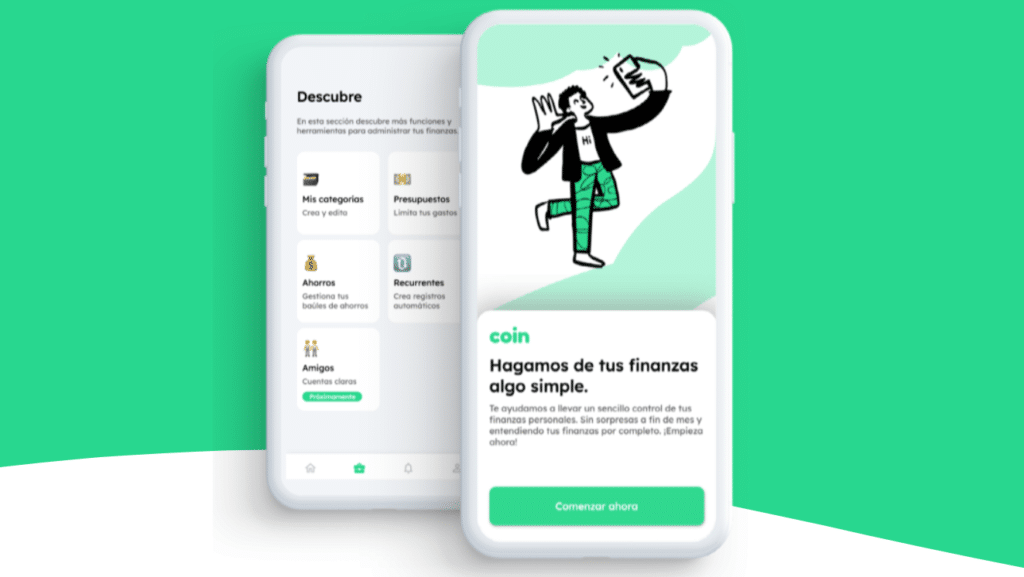
Some of its key features are:
- Recurring records: To make it easier, with recurring records, you can schedule automatic entries for those expenses or incomes that happen regularly for the same amount. For example, rent.
- Income tracking: When you log your income, COIN generates statistics, and offers you an overview of your personal finances, allowing you to track them effectively.
- Goal setting: Savings are crucial in personal finances. This feature is specifically designed for you to set and monitor your goals. And as if that's not enough, it helps you stay focused on reaching and defining them correctly.
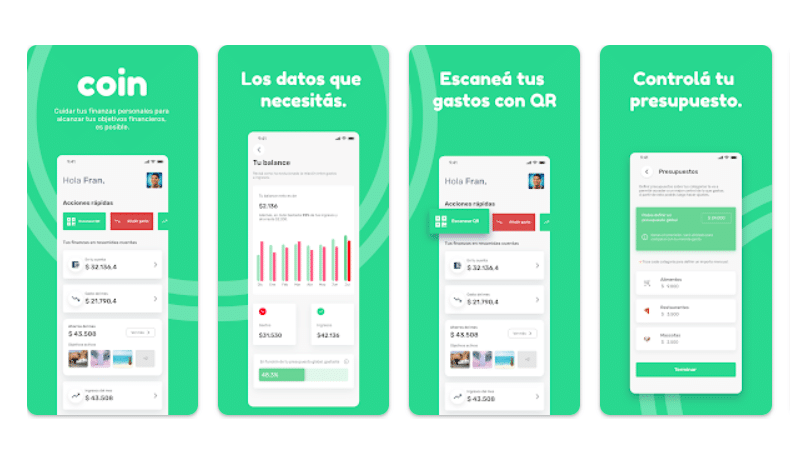
No-code example 7: Chant - Social media app
Our 7th and final entry is a social media app for creatives to engage with one another, chat, and share their work in a community-like environment.
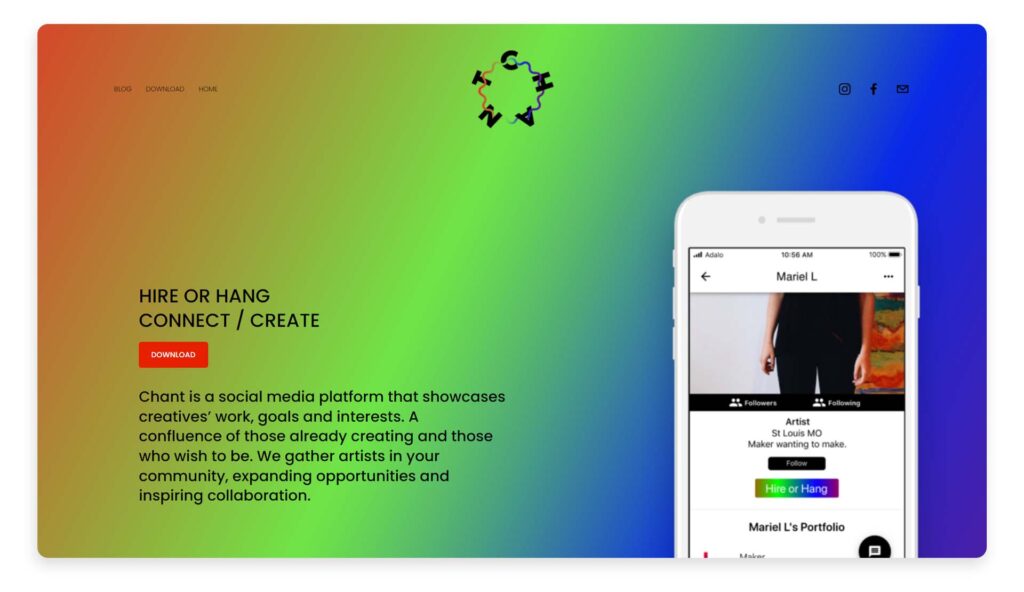
Great to connect and chat with like-minded folks, the no-code app was featured in the Showcase section of Adalo as an example of a unique take on social media.
Just like other no-code apps, you can download Chant easily from both the Apple App Store as well as the Google Play Store, making it easily accessible for everybody.
No-code example 8: introCRM- Custom CRM software
The IntroCRM team looked for a reliable system to handle incoming leads with ease as they searched for efficiency. In addition to taking a long time, the manual entry method was prone to mistakes.
They turned to us at LowCode Agency and we customized a CRM application made to manage lead uploads in bulk while guaranteeing correctness and saving time.

Built on Glide, the impact of the app was transformative. The new system elevated team productivity by 60%, freeing them from tedious manual tasks. With streamlined operations, collaboration thrived, and they got to maximize every opportunity.
No-code example 9: Kidnee - Kidney disease companion
Kidnee was specifically designed to help patients battling kidney disease. Cody Hunt decided to take on this project after discussions with his kidney transplant recipient brother, who couldn't find a quality platform for chronic kidney disease patients.
Kidnee was built with FlutterFlow and Firebase, and it's accessible on both mobile and web.
The app offers a user-friendly dashboard summarizing the day, including diet, medications, lab results, and upcoming appointments. The 'track' page provides a detailed view of diet, vitals, and lab result trends, employing natural language processing for easy meal logging. The 'care' page organizes medications, appointments, and care team contacts.
It also includes a 'learn' section, that serves as an educational hub with blog posts covering various kidney disease aspects and kidney-friendly recipes. Lastly, the 'targets' page personalizes the experience, allowing users to set goals for metrics like weight and nutrient levels in coordination with their care team.
No-code example 10: Blaze Stack - Fire department app
Blazestack is a fire investigation platform that allows users to log, document, and report fire investigations. Whether it's a big state agency, a small local fire department, or somewhere in between; the interface helps create a more thorough fire scene investigation and generates reports faster.

Something that we like about this Bubble app is that, whatever the location, the users will be ready with advanced features for data collection, report generation, and collaboration.
These are some of the amazing features that Blaze Stack has to offer to every fire investigator out there:
- Fire scene data logging workflow
- One-click origin & cause report generation
- Instant summary reports
- Arrest logs
No-code example 11: Swapstack - Newsletter marketplace
Swapstack is an advertising and newsletter marketplace. With a Bubble app and a Webflow page, this low-code platform’s main goal is to connect brands to newsletter audiences for relevant sponsorships.

Swapstack targets two principal audiences:
- Brands: With hundreds of writers covering topics like business to parenting and everything in between, any brand finds the perfect audience on Swapstack.
- Writers: freelancers who are in charge of writing newsletters for active brands with a 0% on-boarding fee and a slack community with over 1,000 subscribers to meet.
Related: The top 5 no-code tools for marketplaces
No-code example 12: Copious.land - Real estate investments
Eric Quay is the founder of Copious.Land: a centralized marketplace to transform the land investing experience. Developed in just 8 weeks by our team at LowCode Agency, Copious.Land is the result of Eric's desire to build the best platform for wholesale property transactions.
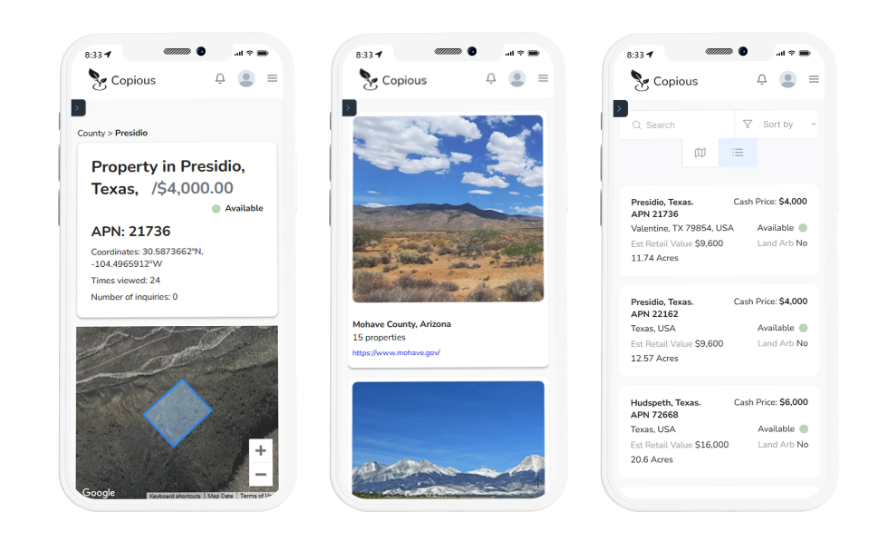
The traditional methods relying on social media and informal channels were falling short, so we built a user-friendly platform with advanced features, such as location-based property search, and a satellite plugin. Through the innovative technology of Bubble, we brought Copious.Land to life—a place for investors to discover, evaluate, and seize wholesale property opportunities.
The app has not only connected buyers and sellers effectively but has also fostered a thriving community of engaged investors.
No-code example 13: Dwellos - Track your home bills
Dwellos users can use this app to keep track of their properties as well as their bills, assets, invoices, tasks, and contacts associated with them. It also features a few advanced settings, like an OCR feature for bills (which means that users upload a PDF or image and the app converts it to text) and an API call for asset manuals, as well as the ability to send email reminders for chores.
The interface allows users to add one property for free and pay for their second. Users may upload their water, wi-fi, phone, and other bills to the app and search for them by category. They can also send bills to a secure email address to convert them to text and categorize them with AI on the app. Users can also keep track of their personal belongings, such as appliances and décor. They can also associate bills with assets, while maintaining a contact list for all property-related contacts, such as service providers and others.
The "Spending Tab" is a feature that we particularly enjoy about this app because it allows customers to keep track of their expenses by category and according to their bills. Finally, users can create task reminders for themselves to keep track of any pending paperwork for their home as well as simple household duties.
If you were on the verge about a no-code app having any viability in the real world, these 7 examples should now help you better understand their real power and flexibility.
While building an app today isn't a Herculean task anymore, it still needs designing and implementing. Check out some more no-code app examples from our no-code portfolio or schedule a discovery call to make yours here!
Unlock the potential of no-code tools with our expert assistance! Our dedicated teams at the Webflow Development Agency, Glide Agency and Bubble Agency are here to help.
At LowCode Agency, we have built over 273 projects using the best no-code and low-code tools on the market. Let us turn your ideas into reality with the perfect no-code platform for your needs!



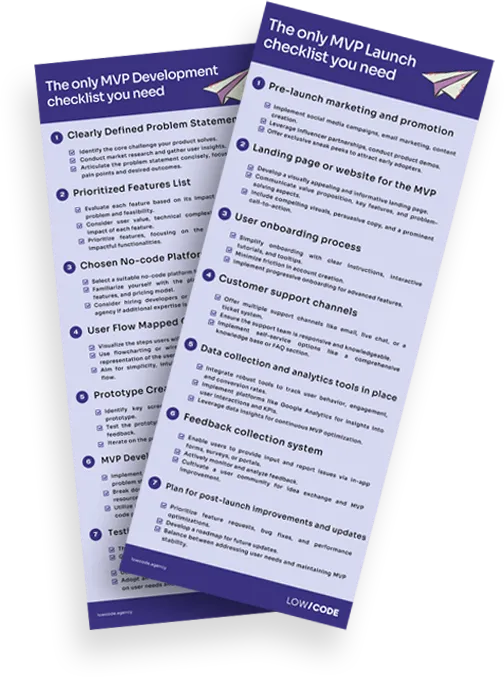
%20(Custom).webp)




